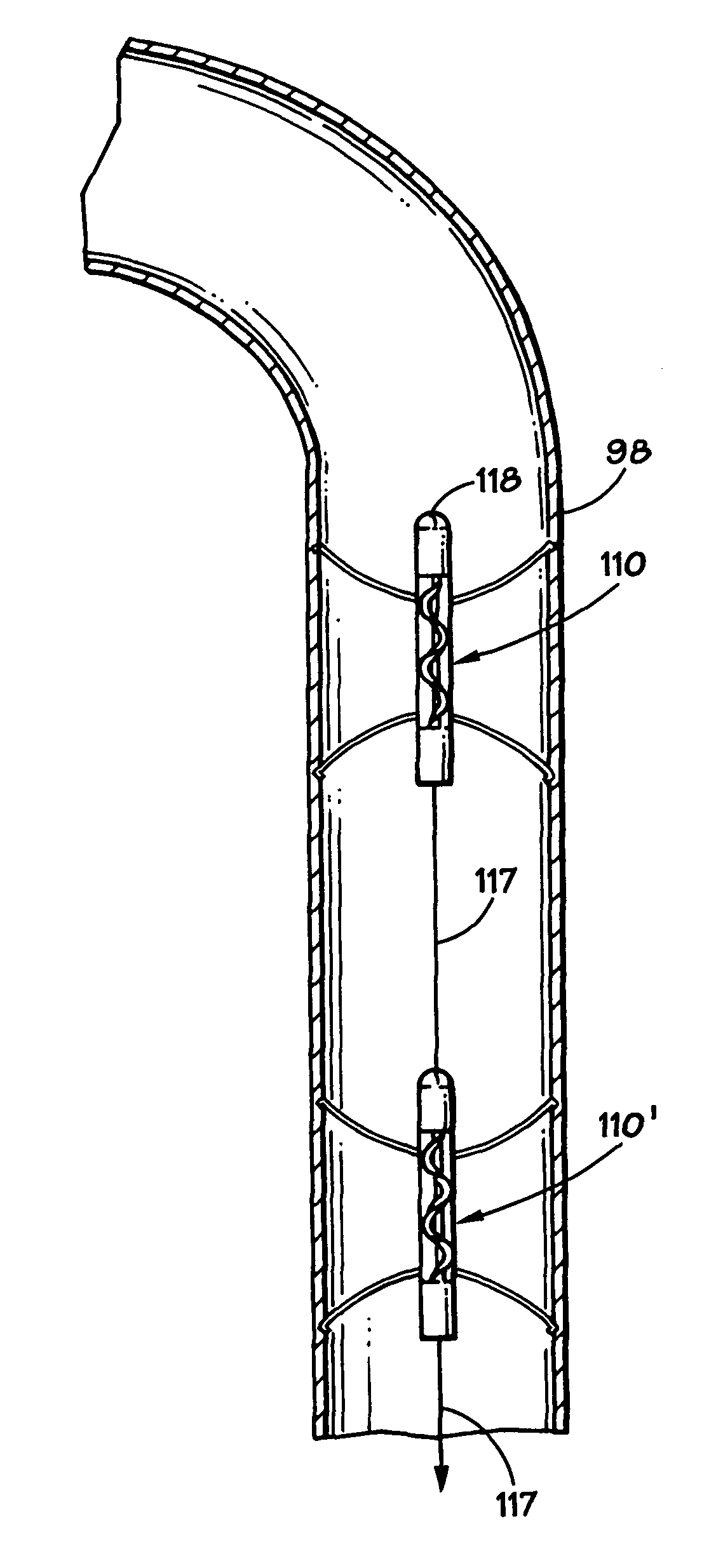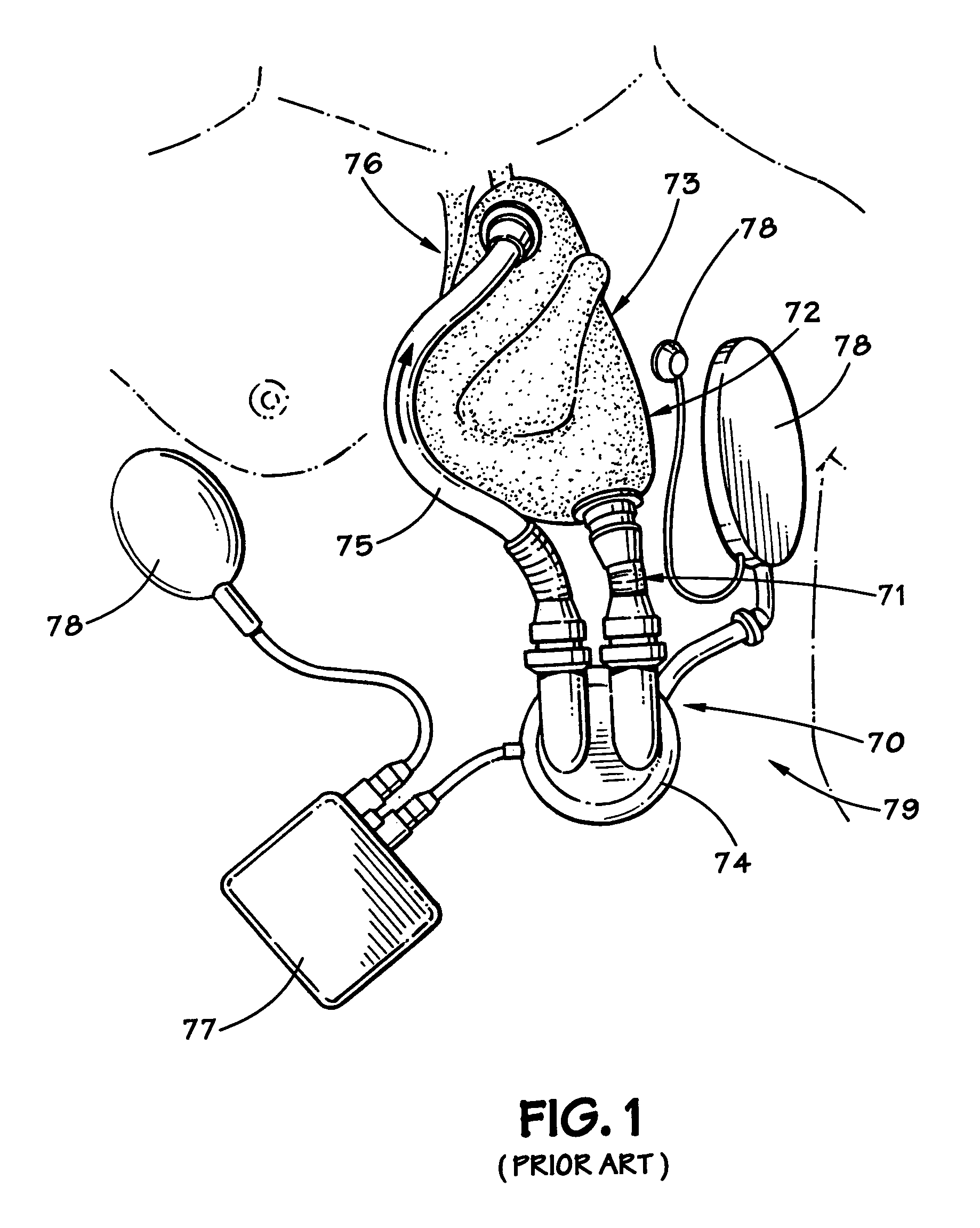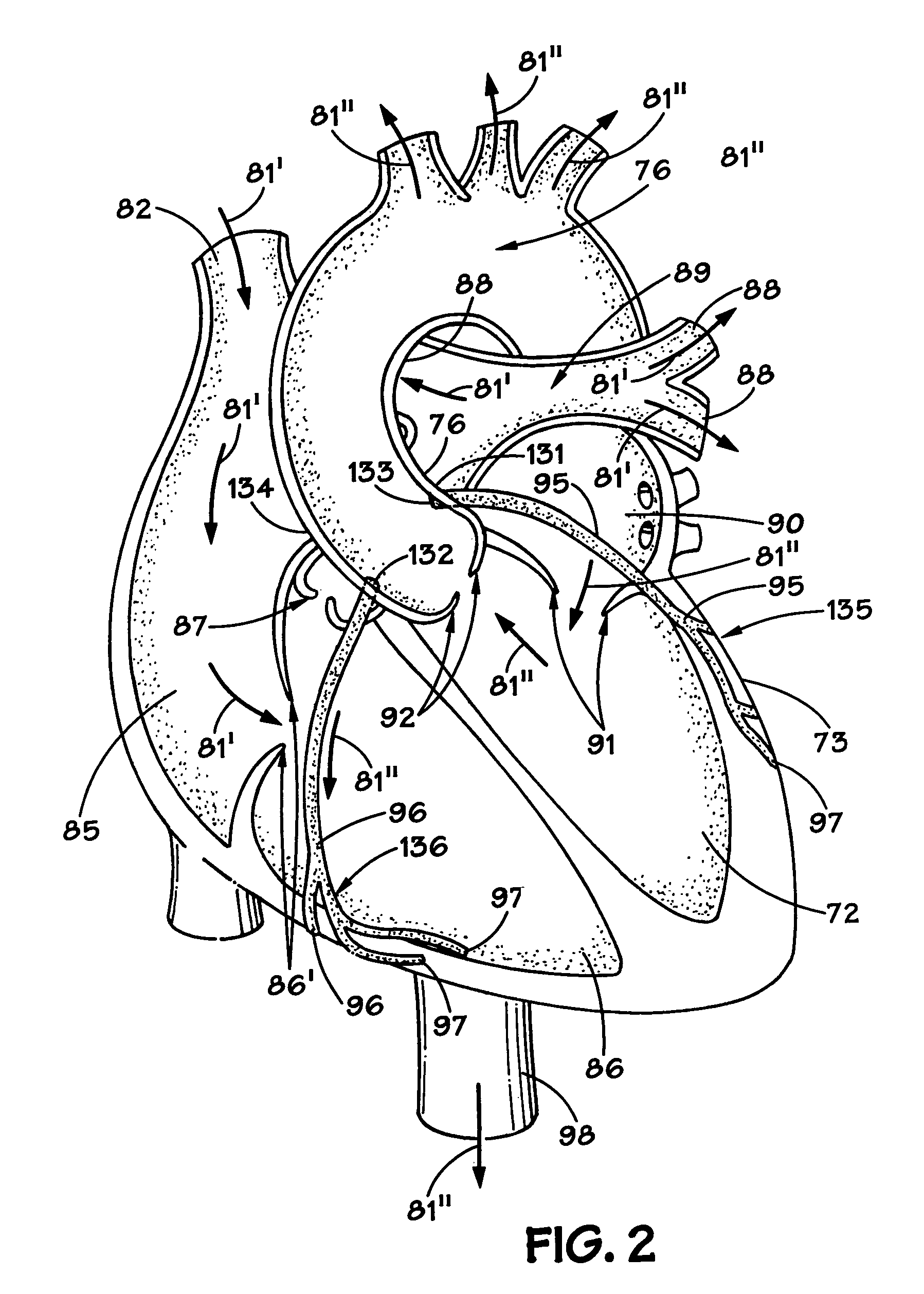Method and apparatus for long-term assisting a left ventricle to pump blood
a technology of left ventricle and long-term assisting, which is applied in the direction of prosthesis, blood vessels, therapy, etc., can solve the problems of affecting the treatment of individuals with congestive heart failure, affecting the survival of patients, so as to achieve the effect of low risk of morbidity and mortality and minimal blood loss
- Summary
- Abstract
- Description
- Claims
- Application Information
AI Technical Summary
Benefits of technology
Problems solved by technology
Method used
Image
Examples
Embodiment Construction
[0027]In FIG. 1, a currently available left ventricle assist device 70 is shown to include: an inflow conduit, or fluid passageway, 71, disposed between the lower portion of the left ventricle 72 of heart 73 and a device housing 74; and an outflow conduit 75 disposed between the device housing 74 and a portion of the ascending aorta 76 of heart 73. Device 70 also includes an associated source 77 of suitable power and related sensors 78, all operatively associated with device housing 74 in a known manner.
[0028]As previously discussed, the implantation of left ventricle assist device 70 within the body 79 requires surgery incisions upon the heart 73, where the inflow conduit 71 is attached to heart 73. As also previously discussed, although left ventricle assist devices presently in use, such as device 70 illustrated in FIG. 1, do provide the best presently available level of care for patients awaiting a heart transplant, by assisting the patient's heart 73 to pump his or her blood th...
PUM
 Login to View More
Login to View More Abstract
Description
Claims
Application Information
 Login to View More
Login to View More - R&D Engineer
- R&D Manager
- IP Professional
- Industry Leading Data Capabilities
- Powerful AI technology
- Patent DNA Extraction
Browse by: Latest US Patents, China's latest patents, Technical Efficacy Thesaurus, Application Domain, Technology Topic, Popular Technical Reports.
© 2024 PatSnap. All rights reserved.Legal|Privacy policy|Modern Slavery Act Transparency Statement|Sitemap|About US| Contact US: help@patsnap.com










